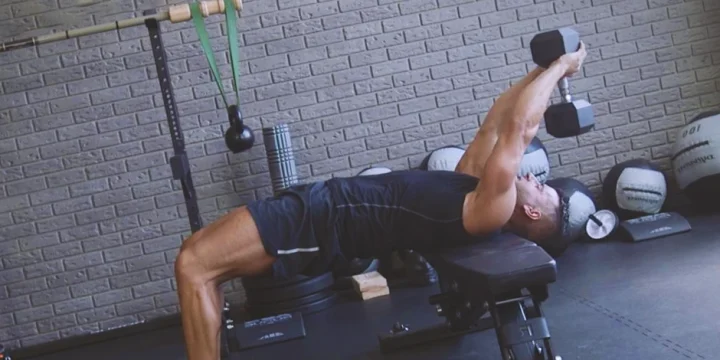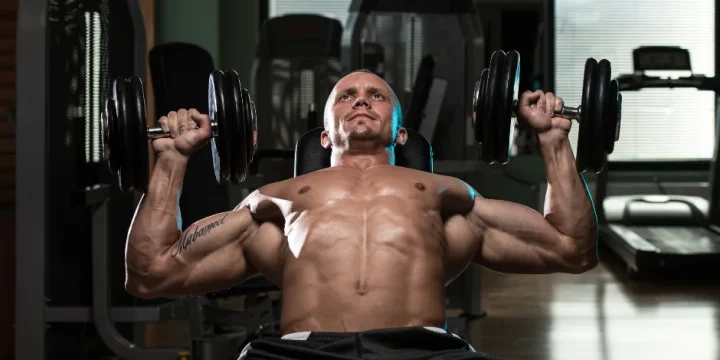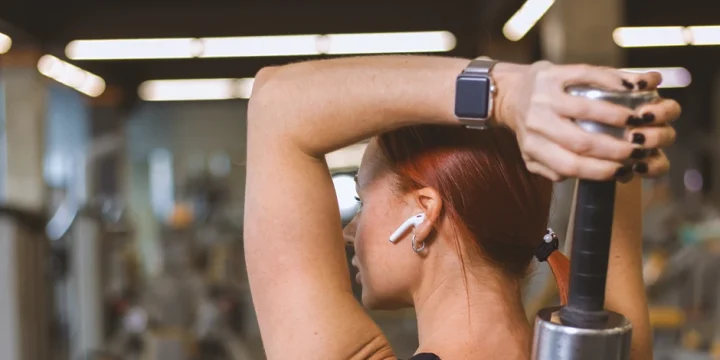If you want to build a back like Bane from Batman or simply improve your strength and posture, you cannot neglect rowing exercises.
Over the years as a personal trainer, I’ve often seen people performing these kinds of exercises with an incorrect form where they round their backs, risking injury because their hamstrings and spinal erectors are too tight.
But if that’s all you can currently do at your fitness level, then the chest-supported version is definitely the better option to build strength in your upper body muscles and avoid injury.
Here’s how to do them properly.
Quick Summary
- To build a strong back and improve posture, chest-supported rows using dumbbells or barbells are essential, as they reduce lower back strain.
- This exercise is particularly beneficial for those struggling with correct form in traditional rows, as it alleviates pressure on the lower back and hamstrings.
- Studies, such as one in Dynamic Medicine, have shown that chest-supported rows can increase activation of key back muscles like the middle trapezius and rhomboids.
- In my experience, chest-supported rows excel at enhancing upper back strength and posture, and when paired with effective fat-burning supplements, they can also contribute to a leaner build.
What Is A Chest-Supported Row?

A chest-supported row, using dumbbells or a barbell, is a rowing exercise where leaning into an incline bench takes the load off your lower back.
This is key for those who struggle with maintaining a flat back during hip hinge movements.
“If your position and form is off when the weight is light, it will only get worse as the weight increases, for this reason it is a good idea to perform any exercise ‘without weight’ to establish a clean movement pattern you will maintain, regardless of the weight you add.”
- Simeon Panda, Fitness Influencer
Unlike traditional bent-over rows, like T-bar rows or barbell rows, where posture often suffers, this variation targets the same muscle groups without stressing the lower back.
Moreover, a study published in the Dynamic Medicine journal showed that this exercise may increase activation of the middle trapezius and rhomboids when compared to the lat pulldown [1].
From what I've seen, this exercise is stellar for beefing up the rear shoulders and fixing posture, vital for a robust upper body. This aligns with findings from the Journal of Strength and Conditioning Research [2].
What Muscles Does The Chest-Supported Row Work?
In my training sessions, I've focused on the chest-supported row to target the upper and mid-back muscles, like the middle trapezius and rhomboids.
It's incredibly effective for improving posture and back thickness, echoing the University of Wisconsin's research [3].
The targeted muscles are:
- Rhomboids
- Biceps
- Latissimus Dorsi (Lats)
- Trapezius
Essentially, all the major muscles in your upper back and those in the arms, too.
How To Perform The Chest-Supported Row
Dumbbell Chest-Supported Rows
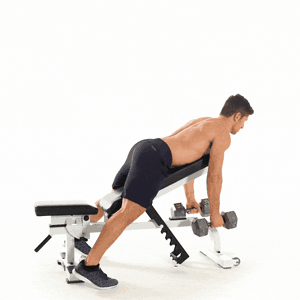
To perform chest-supported dumbbell rows, use an incline bench at about 45 degrees.
- The starting point: With a neutral grip, grab a pair of dumbbells and lean onto the bench with your face toward the pad. Plant your feet flat on the floor, legs straight, and let your arms hang straight down, palms facing each other.
- With your shoulder blades squeezed together, drive your elbows toward the ceiling, bringing the dumbbells to your ribcage.
Important: As you pull the weights up, make sure you don’t lift your torso, as it can cause hyperextension in the thoracic spine. - Hold the dumbbells in an isometric squeeze for about 5 seconds. Then, slowly lower your arms, return to the starting position and repeat the movement for as many reps as necessary.
Other Variations
Based on your goals and as I've practiced, you can vary the chest-supported dumbbell row by adjusting your elbow position. Elbows wide target the upper back, a technique I often use for focusing on the shoulder blade area.
If you stay more tucked in, you’ll be working more on the shoulder extension, challenging the muscle group at your lats.
Barbell Chest-Supported Rows
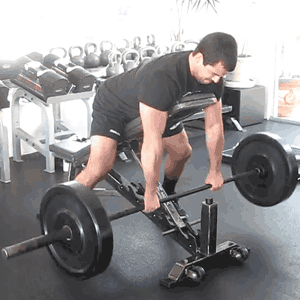
Tools for the Exercise:
- Weight plates (start with a lighter weight and slowly move the heavyweights)
- Adjustable bench
- Olympic bar
- Squat Rack (optional, though useful to begin the movement)
How to Perform the Barbell Chest-Supported Row Exercise:
- Set your bench near the rack at an incline angle of approximately 45 degrees.
- Place the hooks on the outside of the squat rack at a comfortable height for reaching arm-length (this step is optional if you have someone to help you move the barbell when you begin the movement).
- Position the bench over the center of the barbell.
- Lie down on the bench with your chest towards the pad.
- Keep your feet in a neutral position on the ground
- Hold the bar with a neutral grip, tighten your shoulder blades and start moving the weights up and down in a slow and controlled manner. Note that proper technique is more important than heavy lifting.
Related articles:
FAQs
Are Rows Better Than Pull-ups?
Rows are not better or worse than pull-ups. They both work your lats, rhomboids, mid and lower traps, shoulders, biceps, forearms, and core. The pull-up is much more lat-focused, while the row works more on the latissimus dorsi and the mid-lower trap.
What Are the Best Alternative Exercises for a Chest-Supported Row?
The best alternative exercises for a chest-supported row are:
- Renegade Row
- Tripod Dumbbell Row
- Seated Cable Rows
- Inverted Rows
How Do You Do Chest-Supported Rows at Home?
To do the chest-supported dumbbell row at home, put some blocks under a flat bench to raise it high enough to do the rep.
References:
- https://www.ncbi.nlm.nih.gov/pmc/articles/PMC449729/
- https://journals.lww.com/nsca-jscr/FullText/2009/08000/Comparison_of_Different_Rowing_Exercises__Trunk.7.aspx
- https://minds.wisconsin.edu/handle/1793/76924
About The Author
You May Also Like
